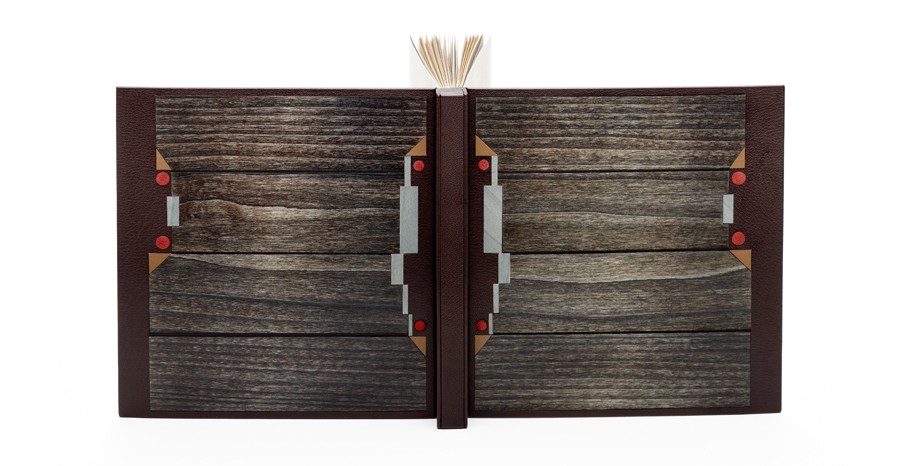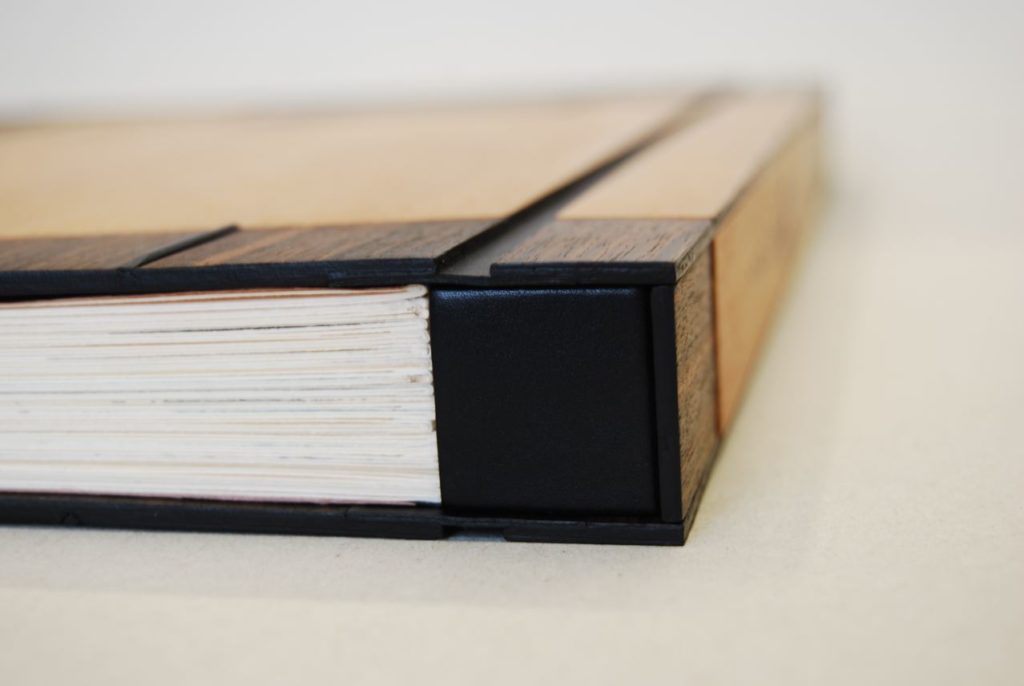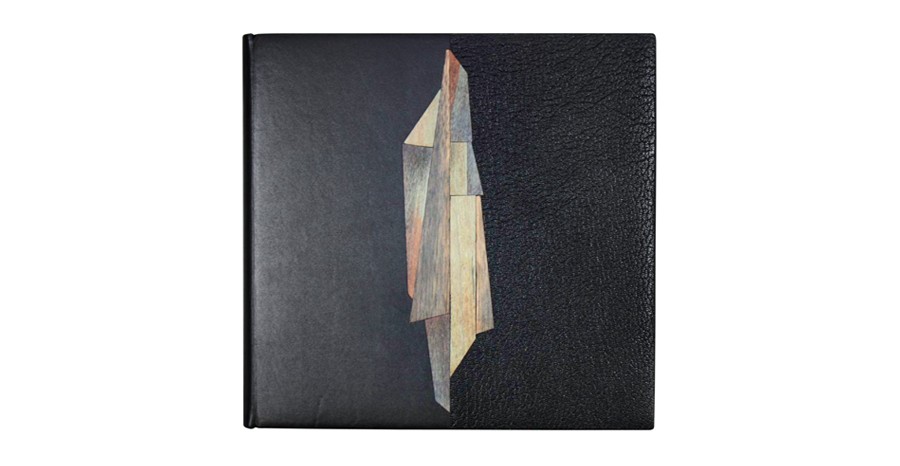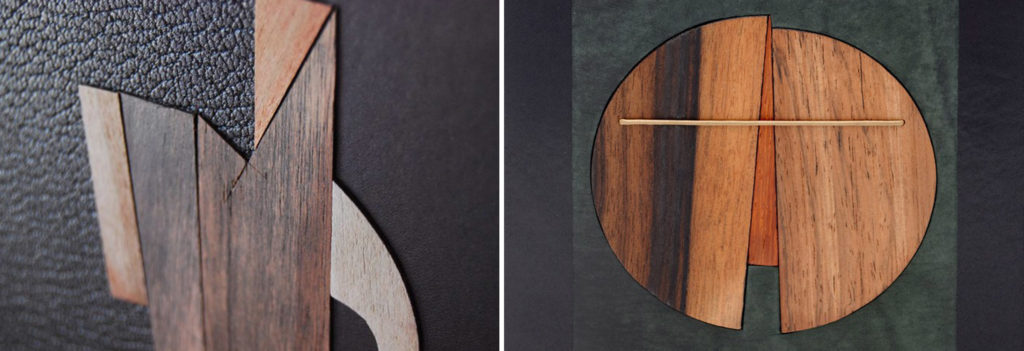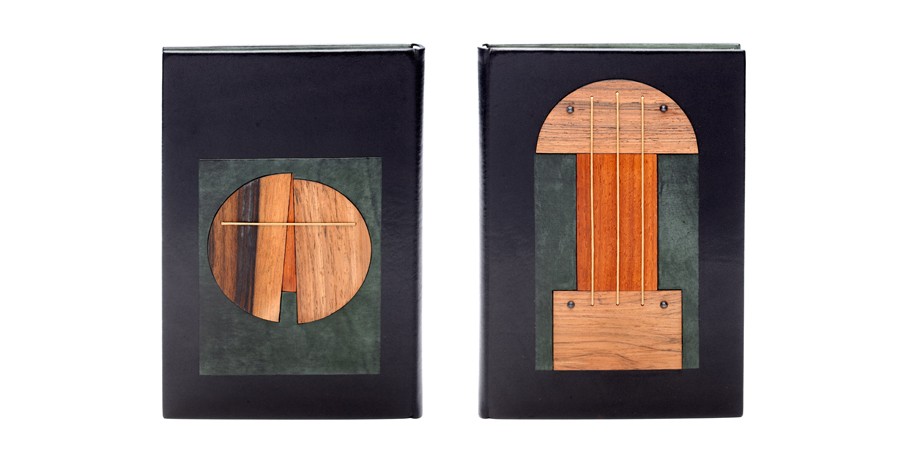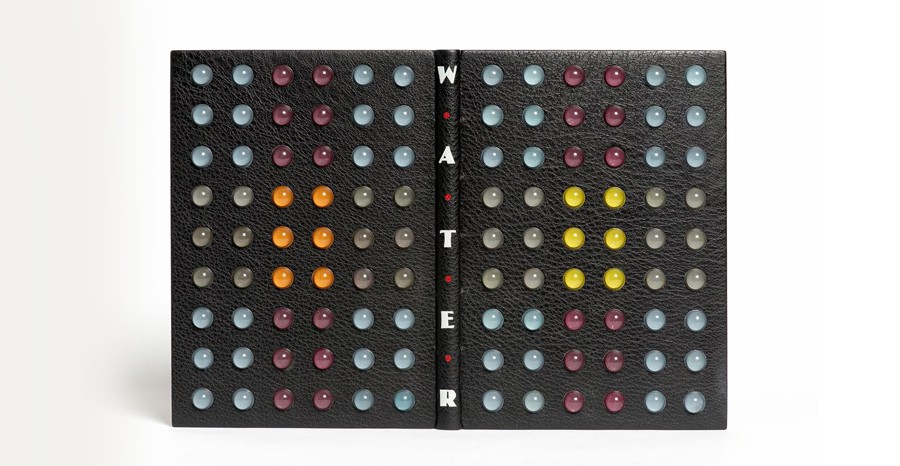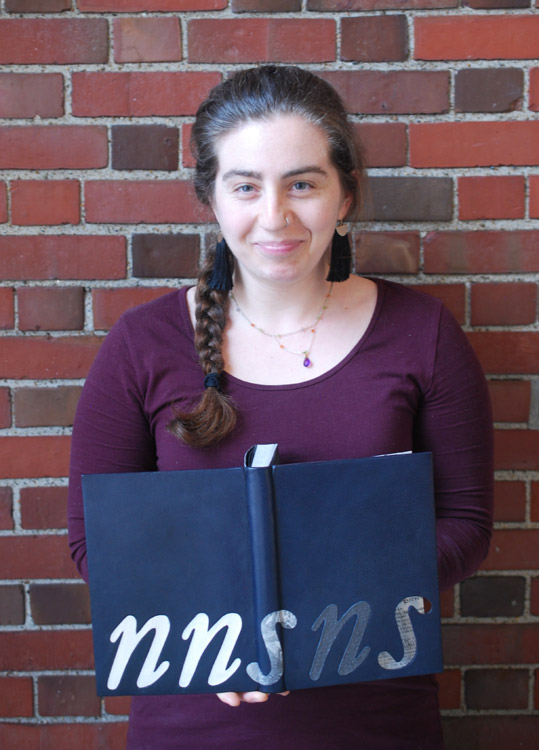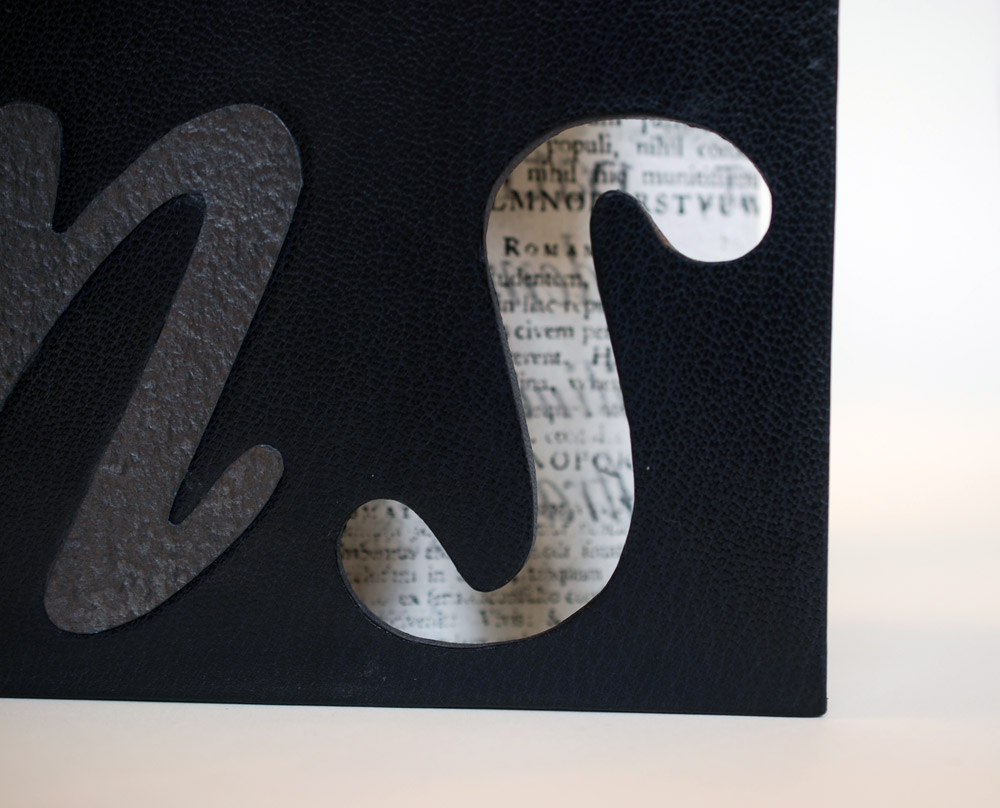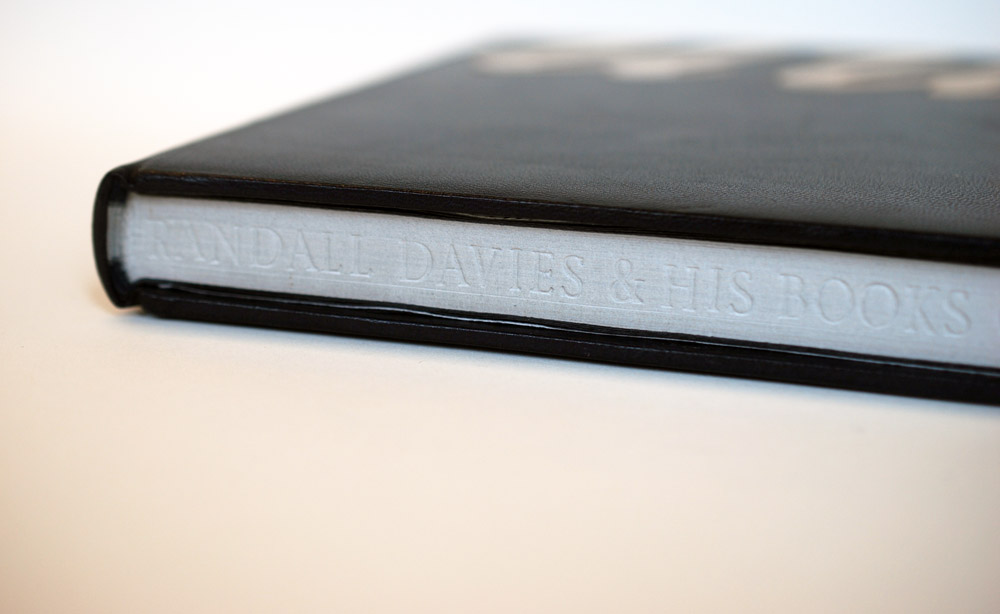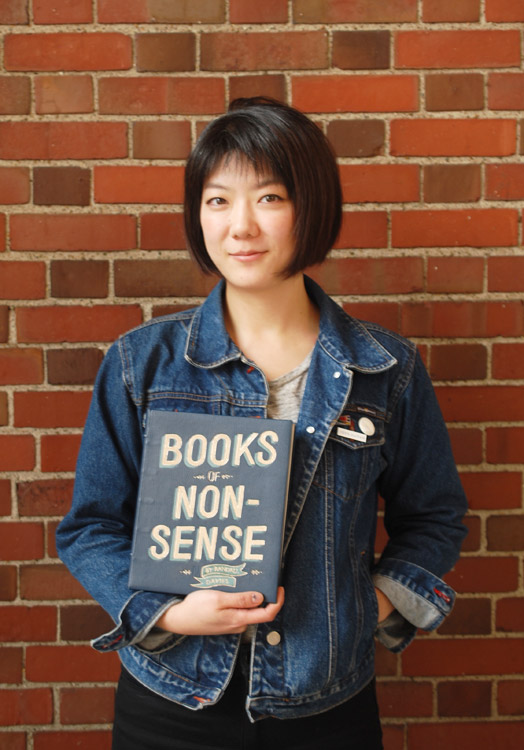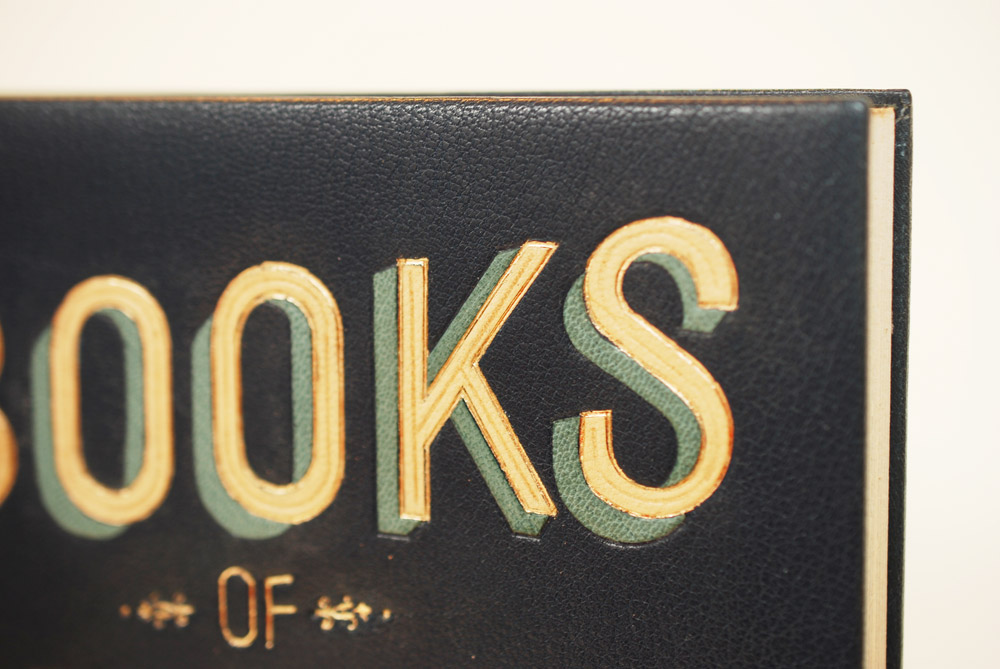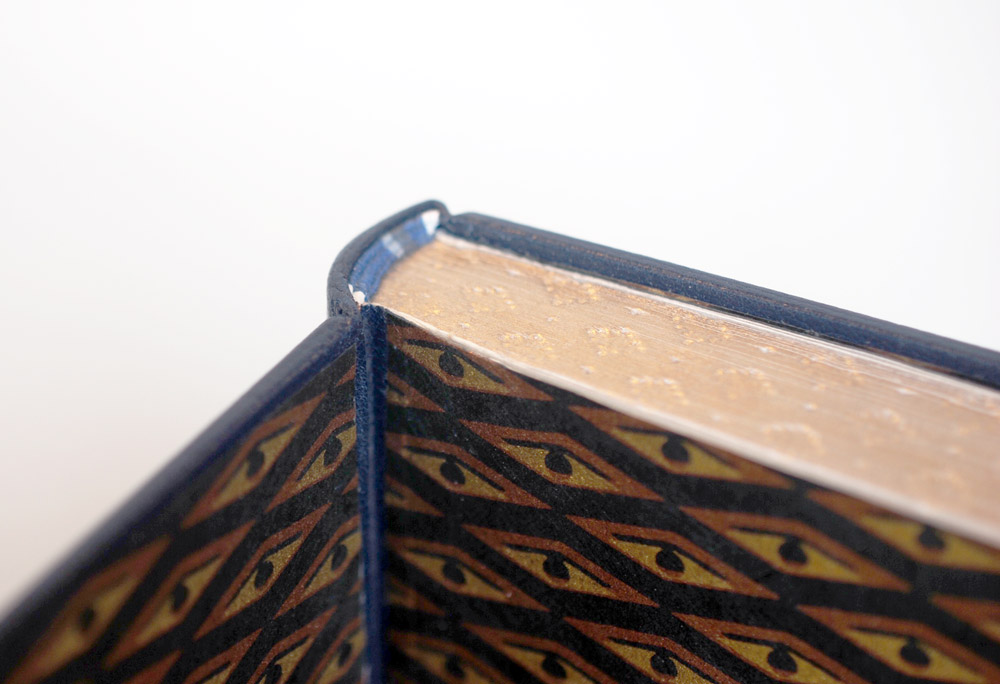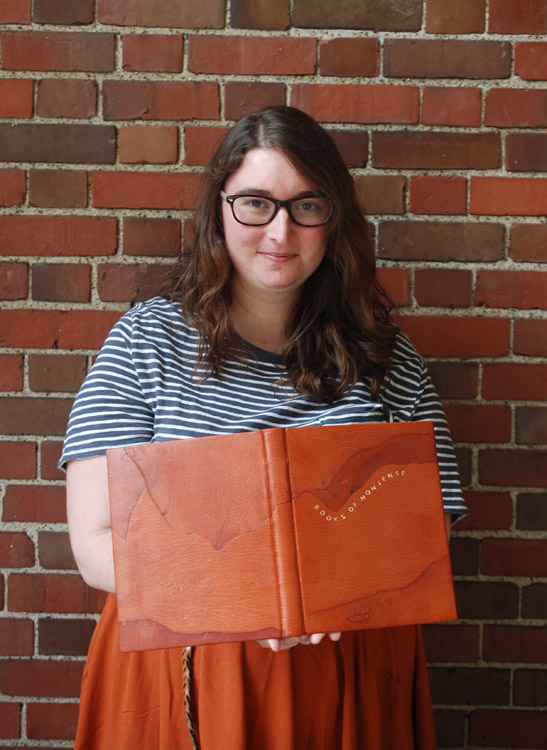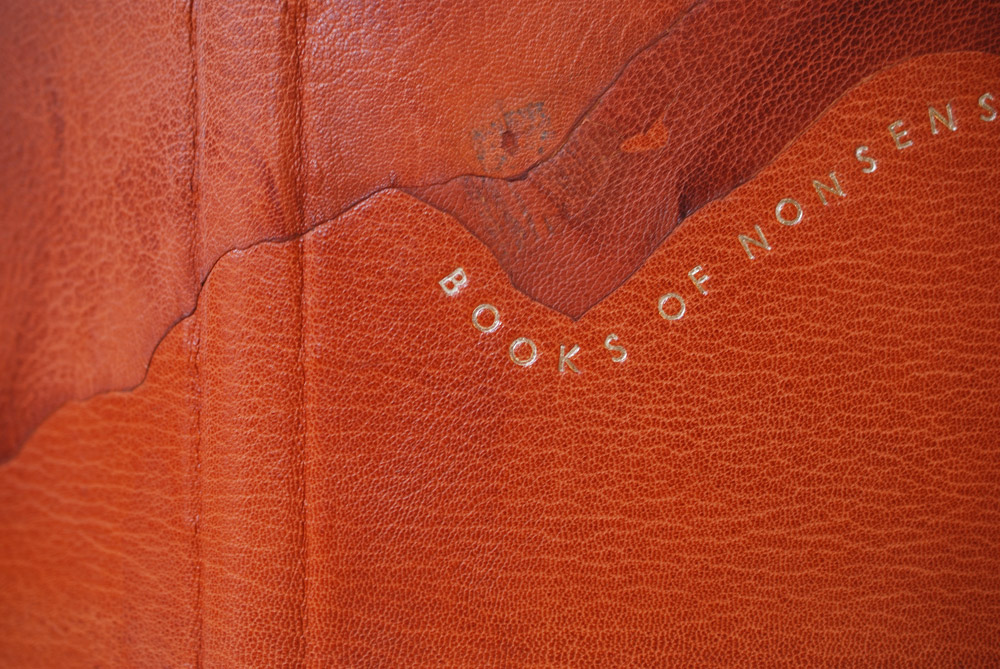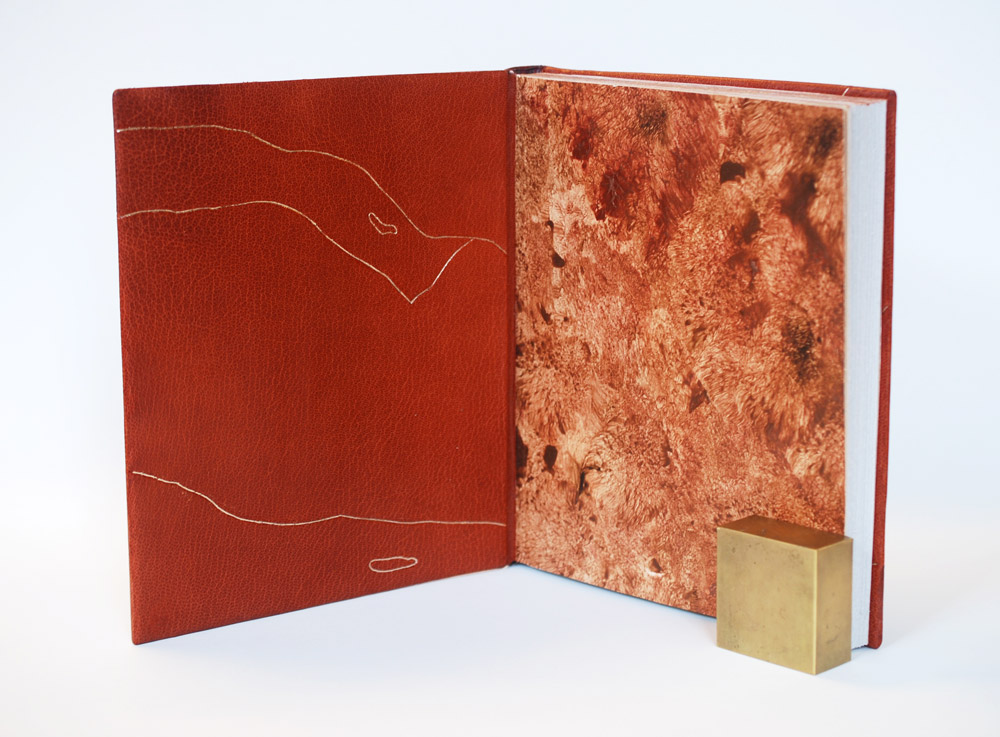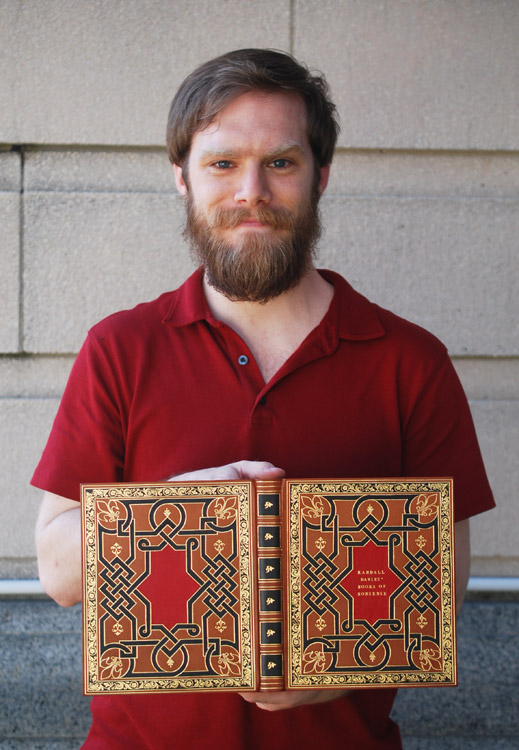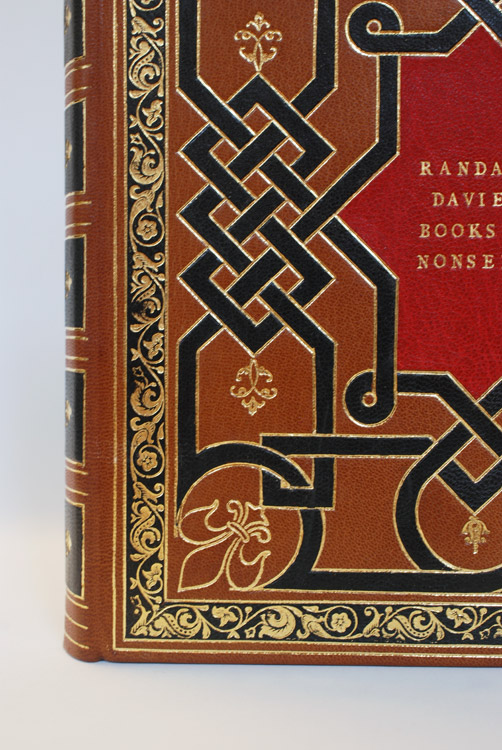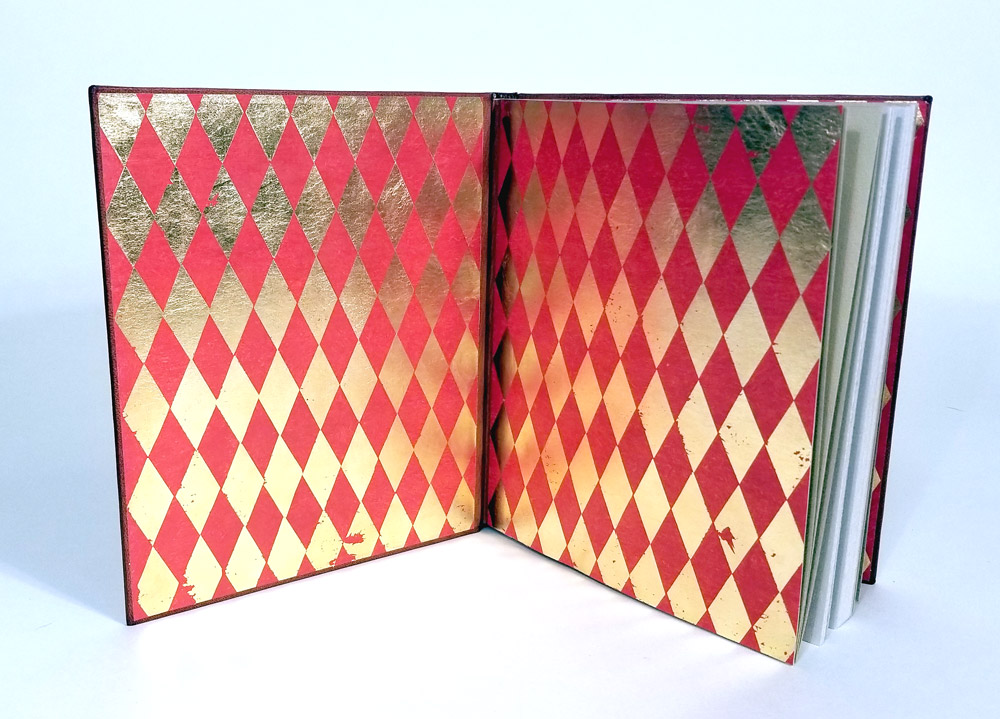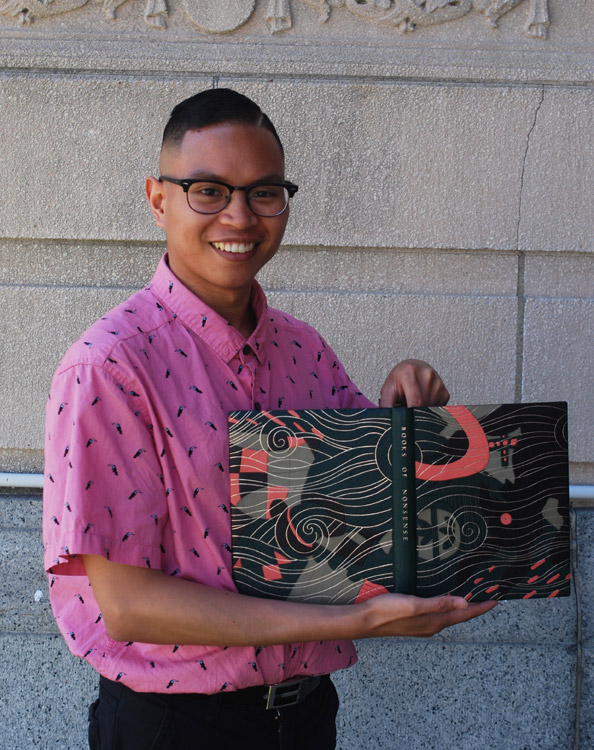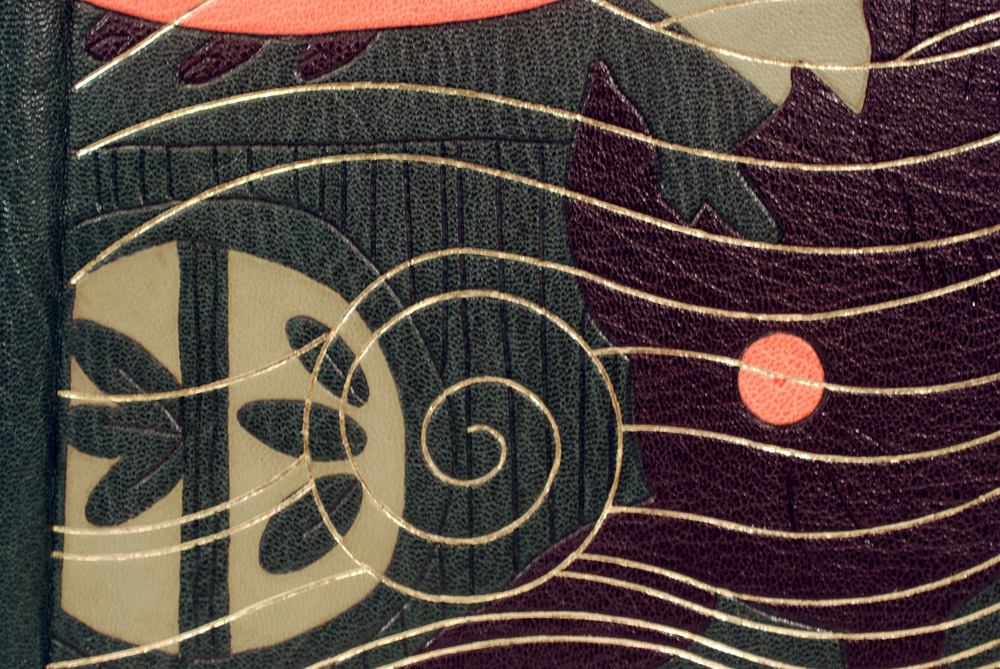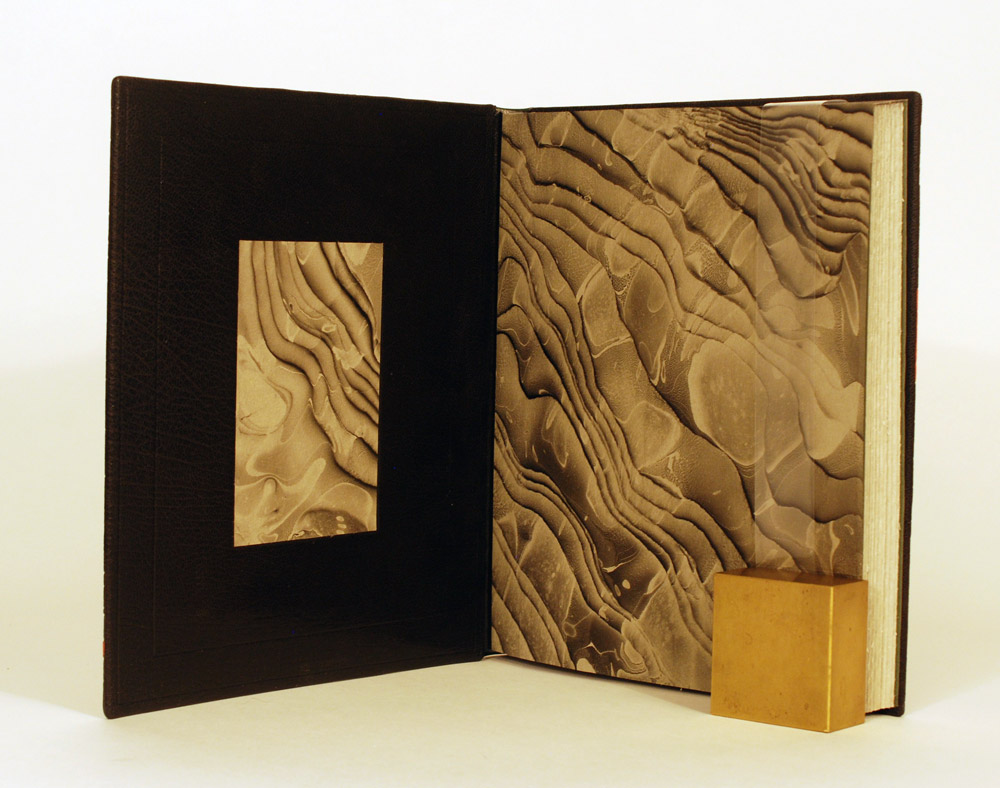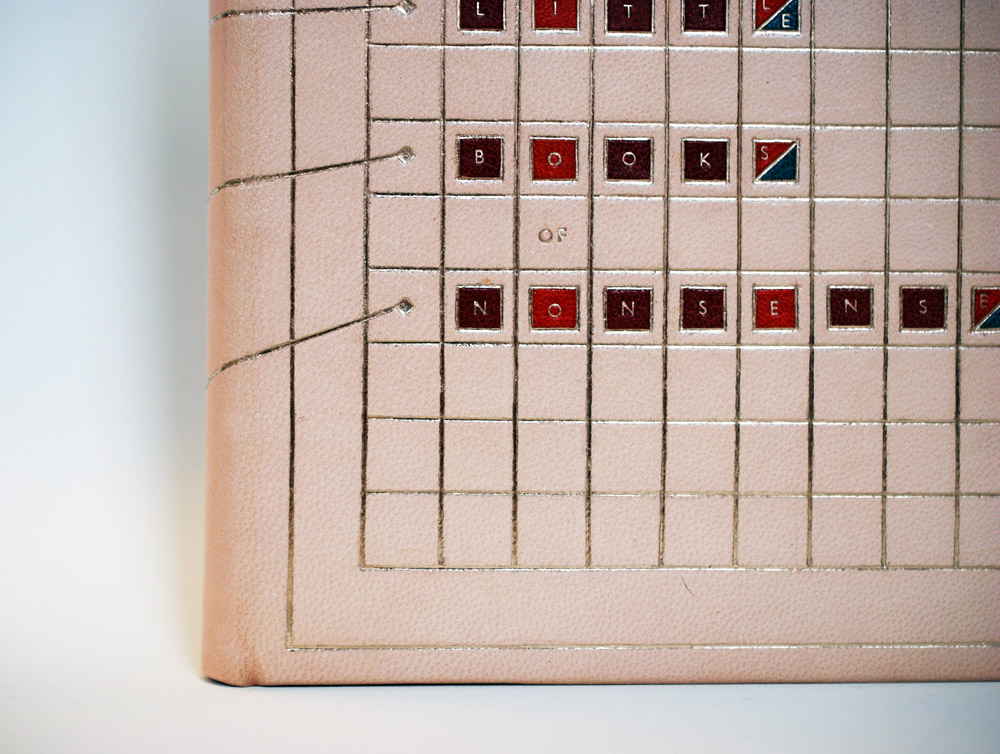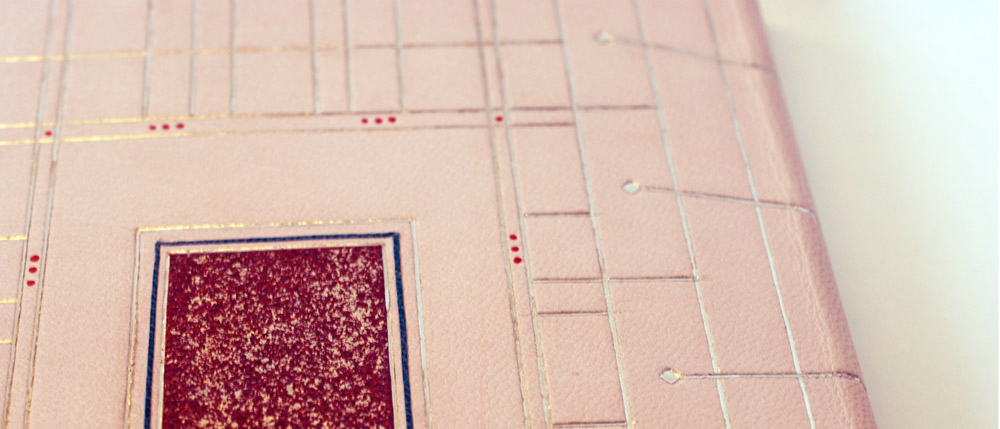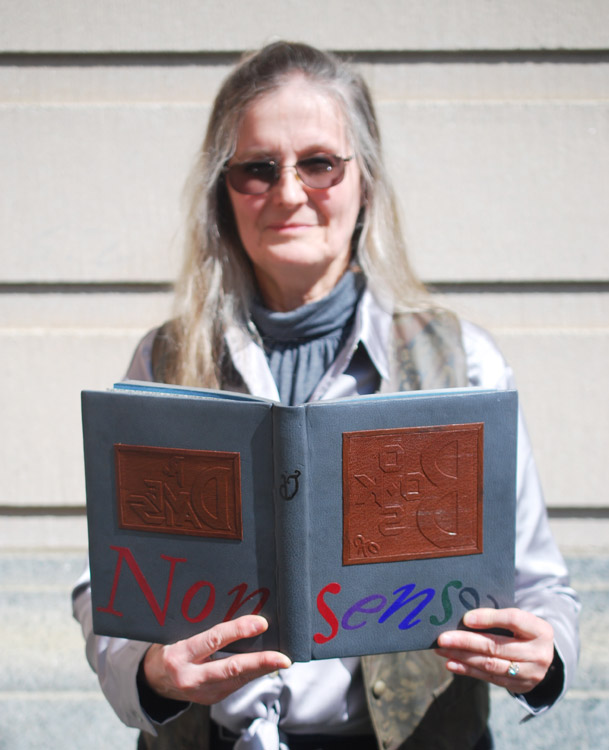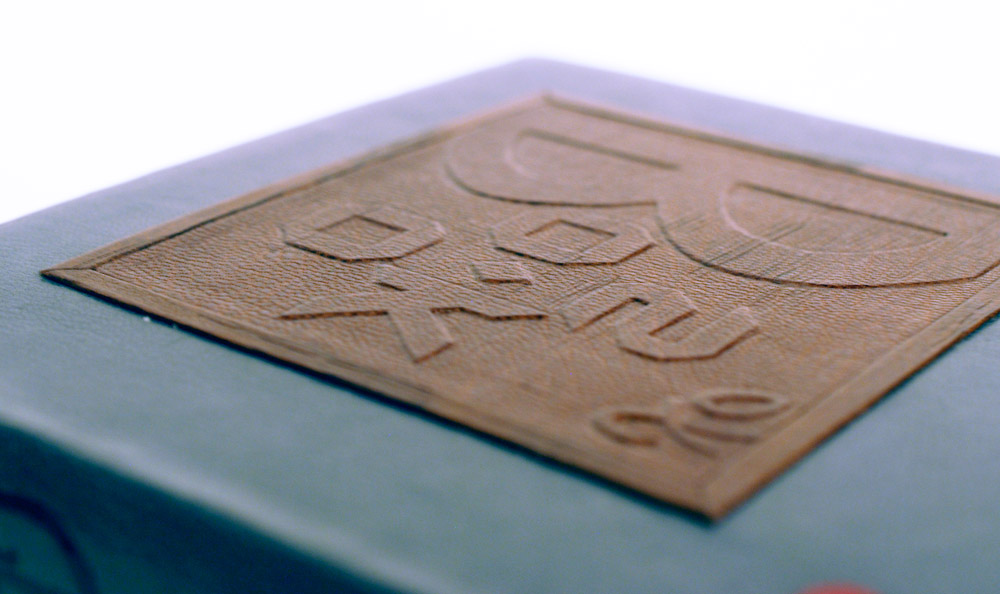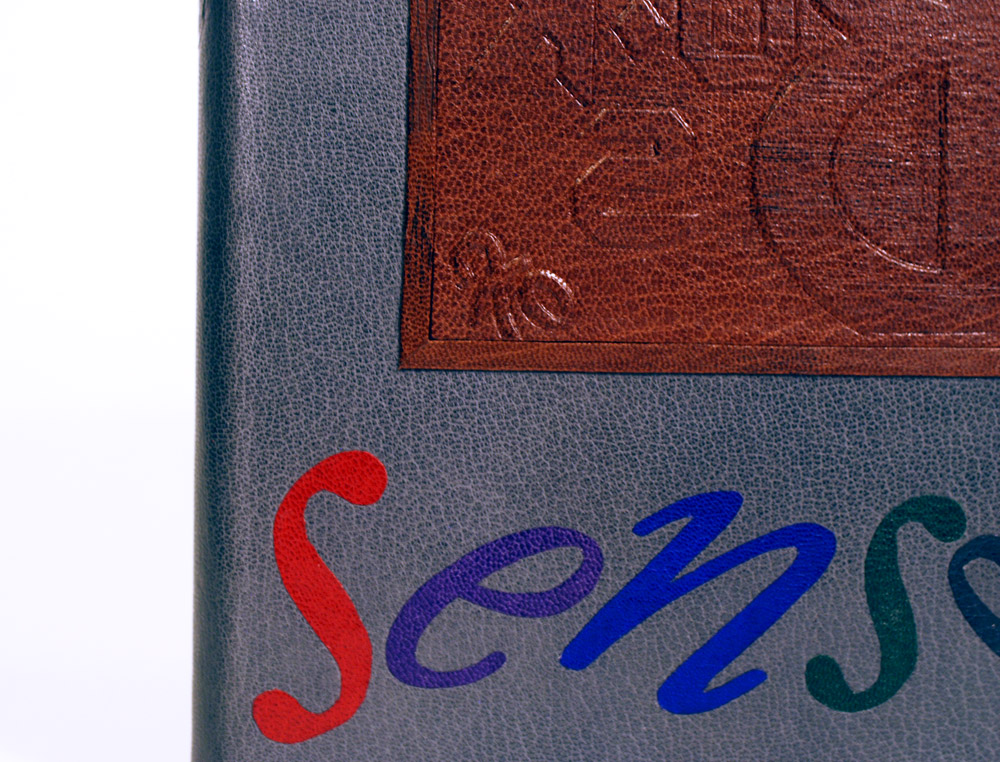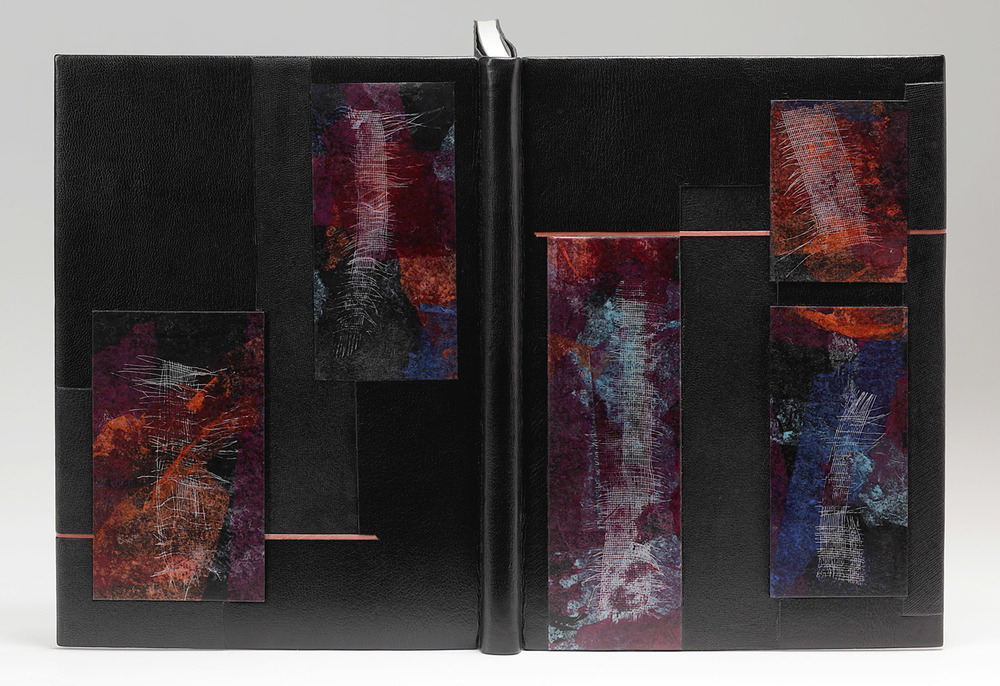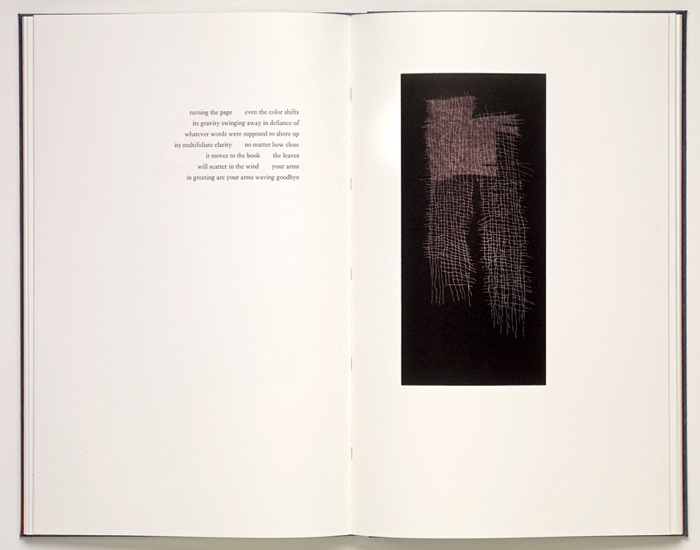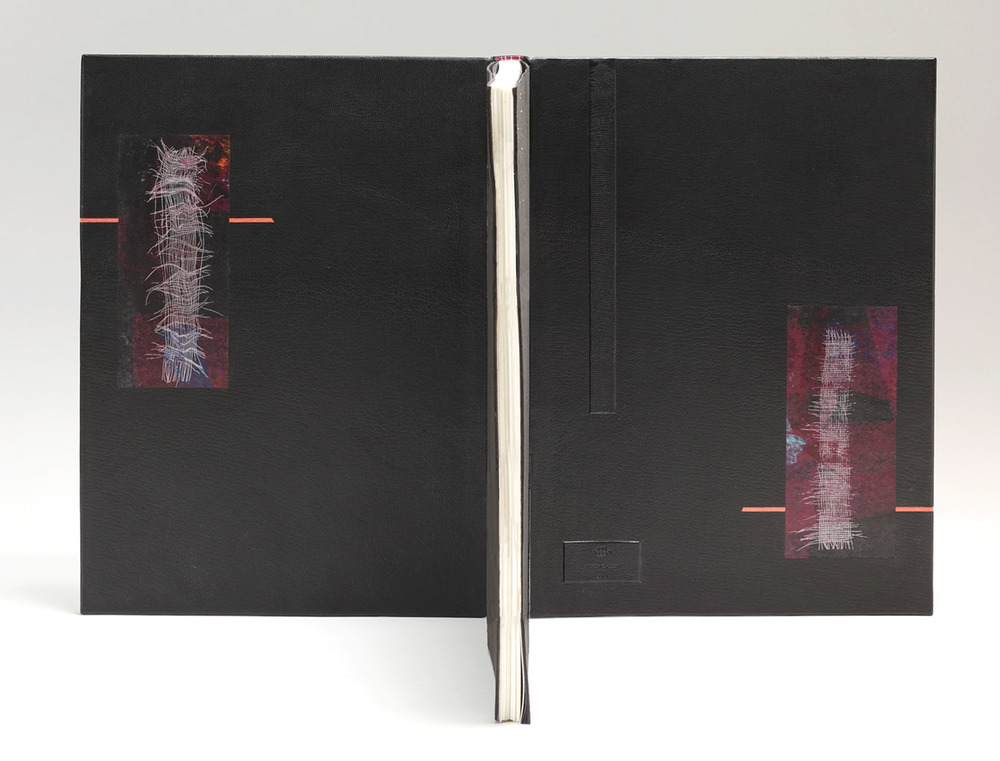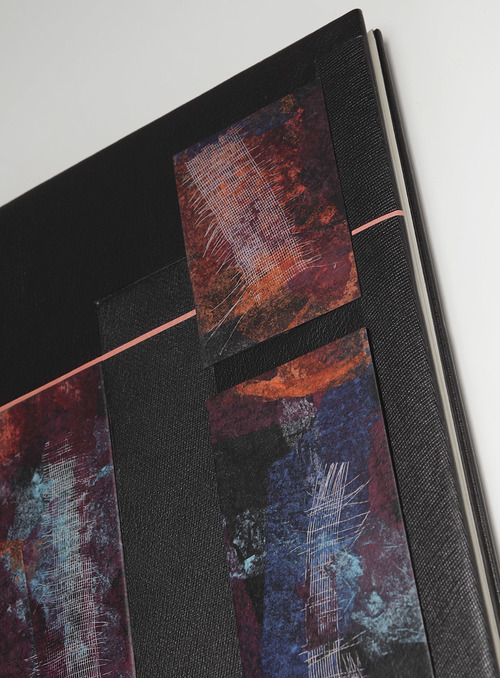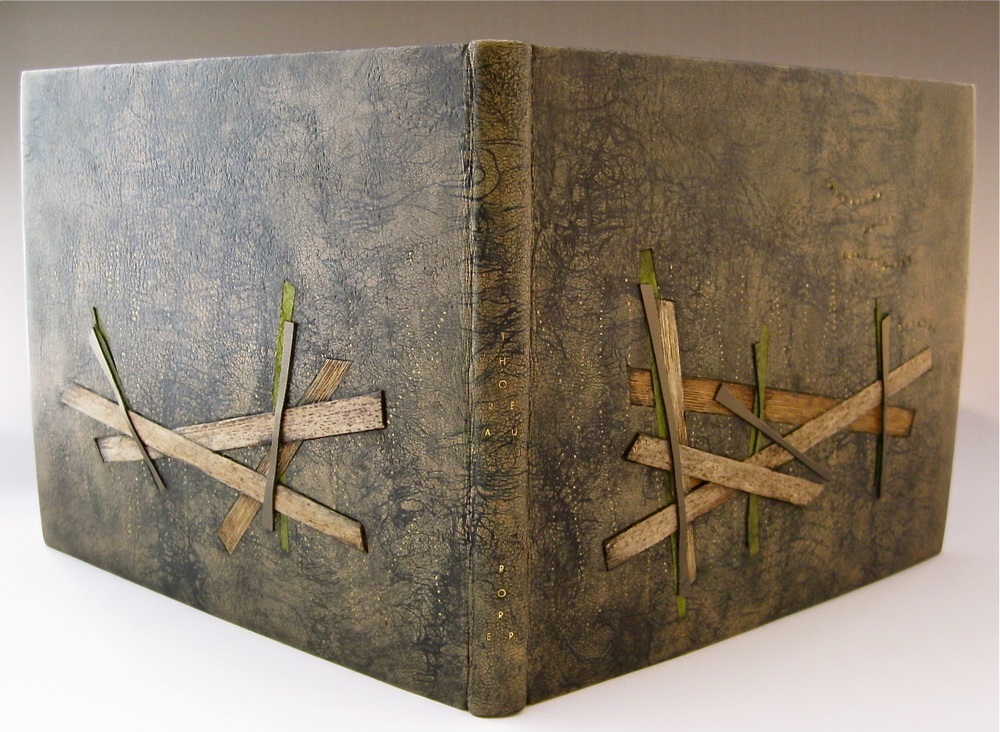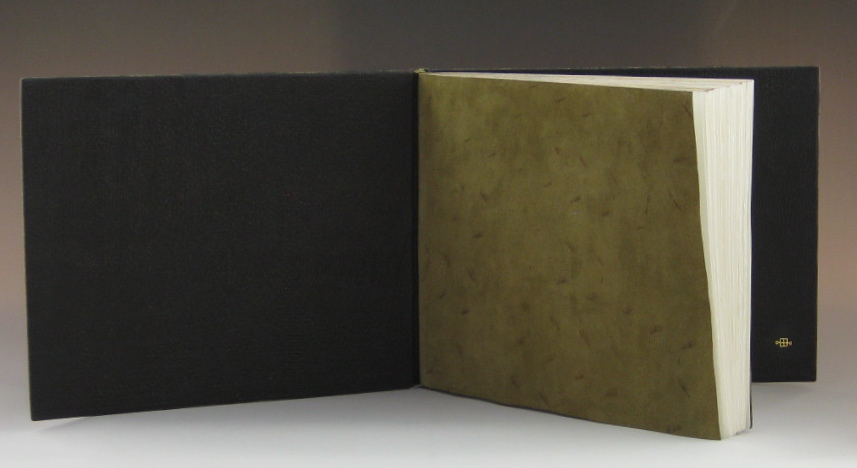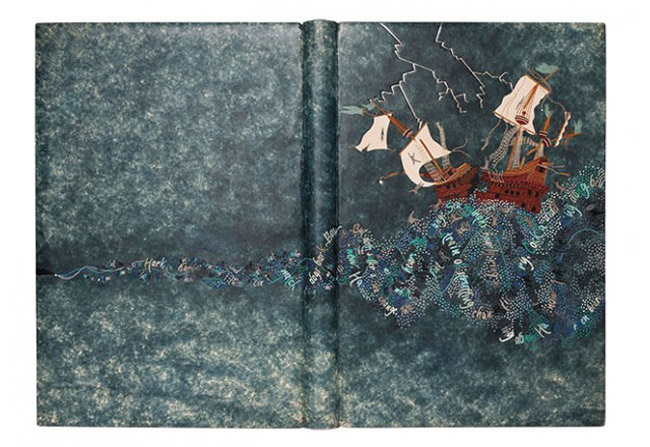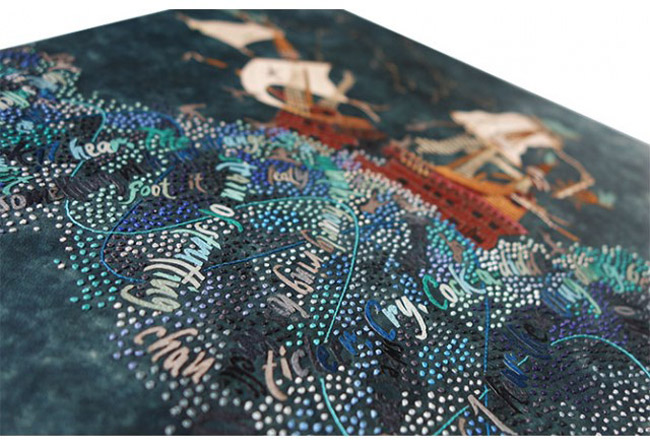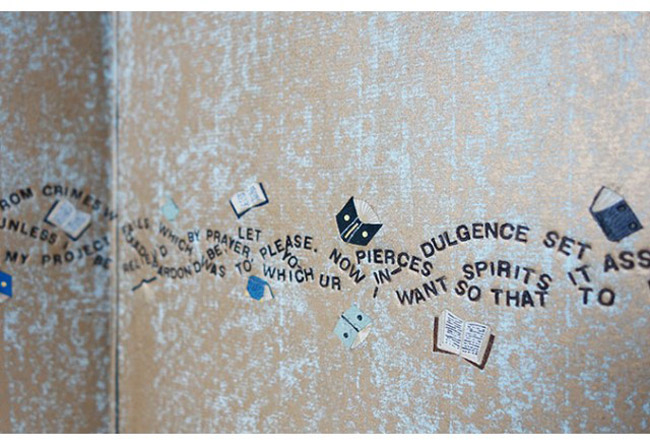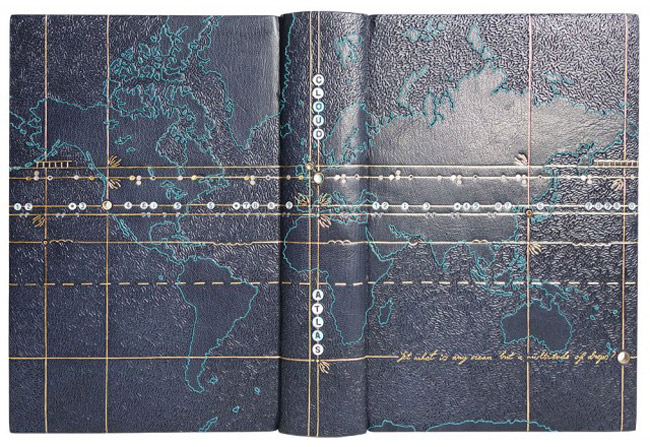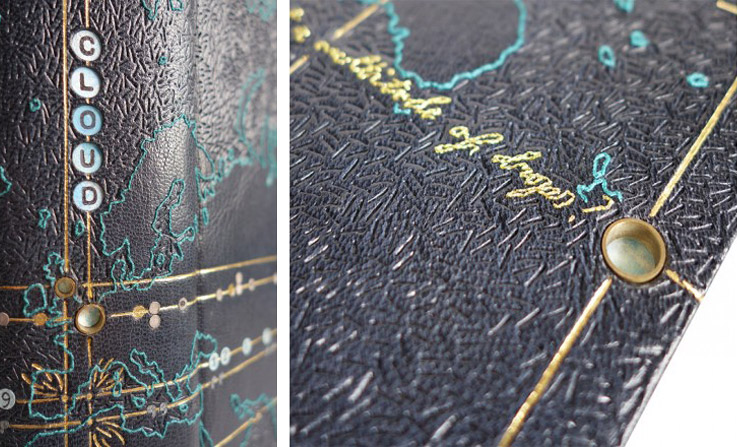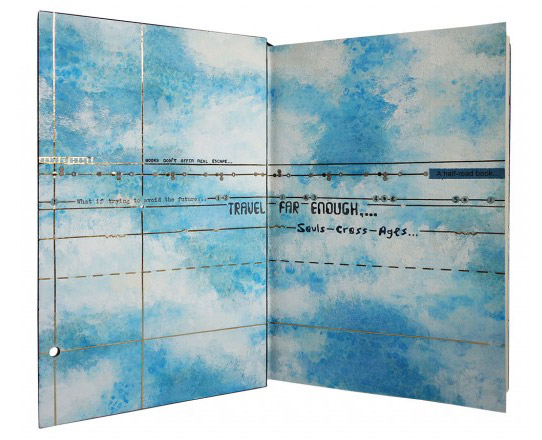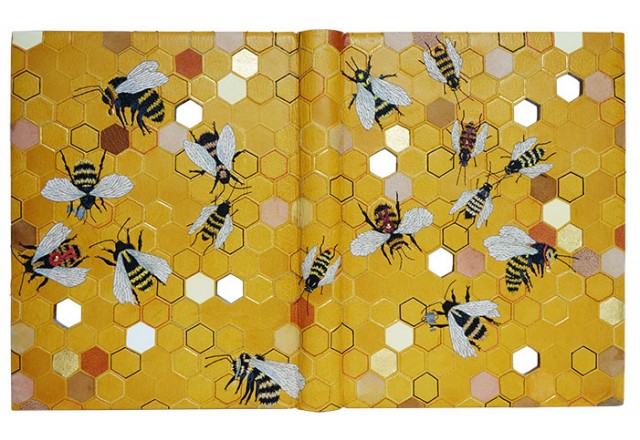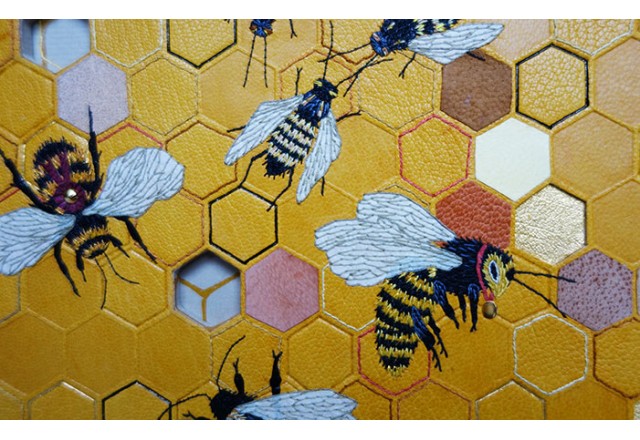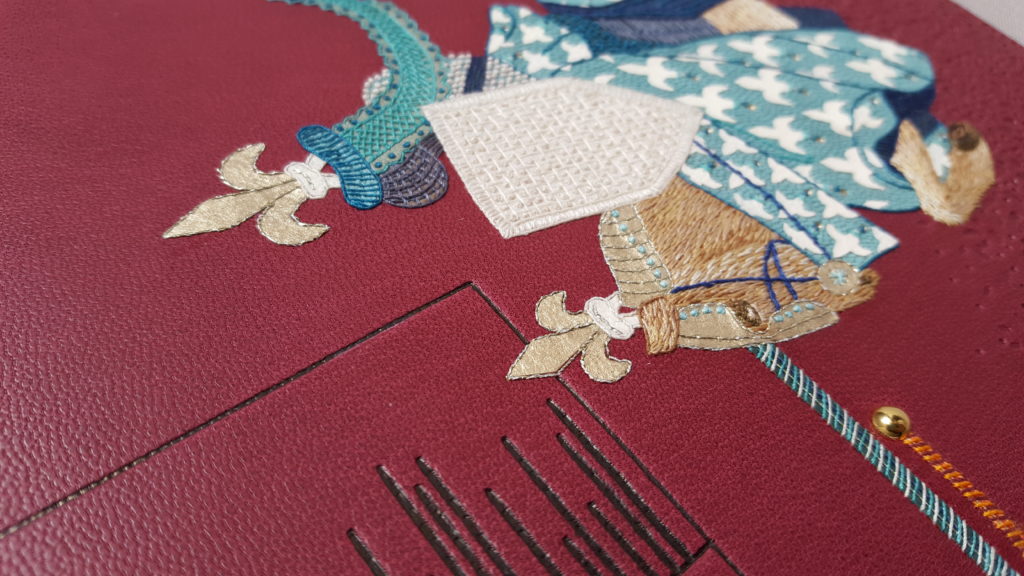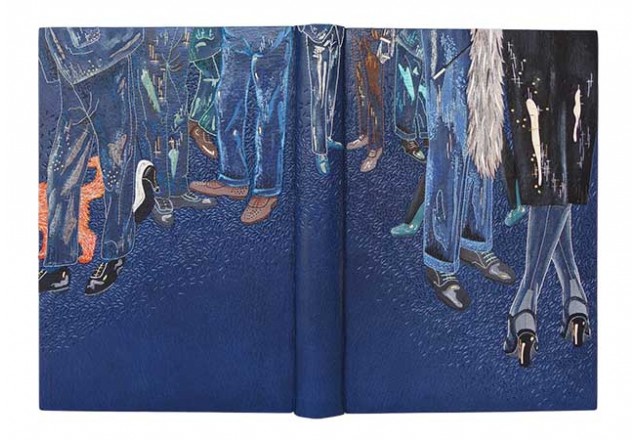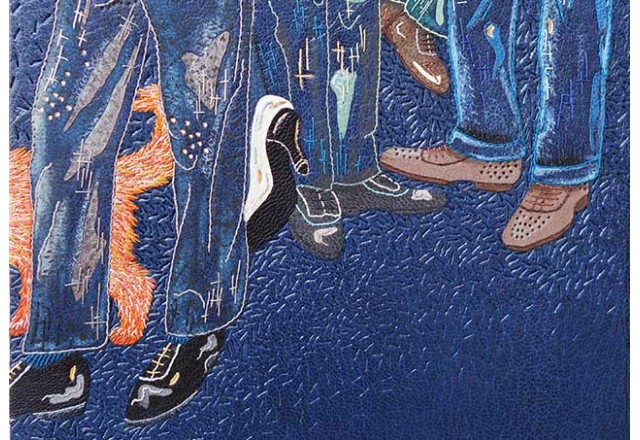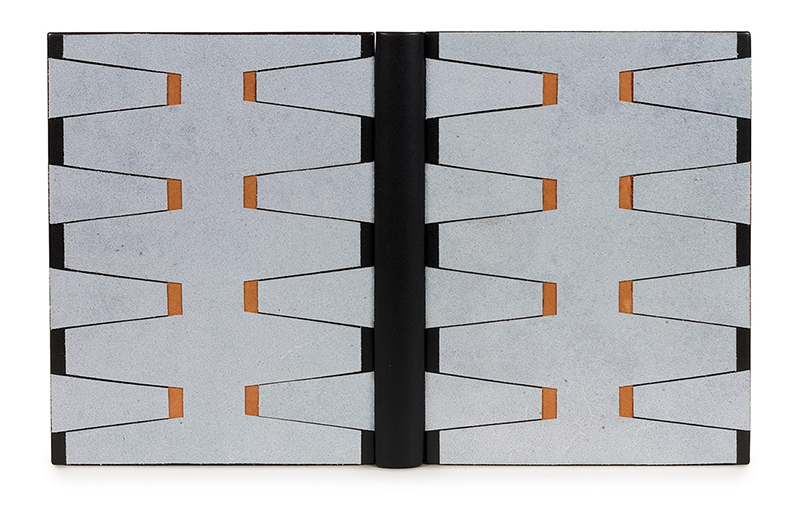 Eduardo Giménez entered his binding of L’oeuvre de Pierre Lecuire: La Nuit into the Society of Bookbinders 2015 International Competition. It is bound in the Dorfner-style in black calfskin with pale blue suede onlays and orange paper inlays. Black and orange Nepalese paper are used for the doublures and flyleaves. Eduardo’s binding won the Harmatan Leather Award for Forwarding in the Case Binding Category.
Eduardo Giménez entered his binding of L’oeuvre de Pierre Lecuire: La Nuit into the Society of Bookbinders 2015 International Competition. It is bound in the Dorfner-style in black calfskin with pale blue suede onlays and orange paper inlays. Black and orange Nepalese paper are used for the doublures and flyleaves. Eduardo’s binding won the Harmatan Leather Award for Forwarding in the Case Binding Category.
You studied in Belguim with Edgard Claes and in this binding you employ the Dorfner structure. The description in the Society of Bookbinders catalog refers to this as a Dorfner-style case binding. I’ve had the opportunity to learn this structure as well and would love to know how you modified the structure into a case rather than attaching the boards to the sewing supports?
Indeed, in this binding I used the Dorfner style, a leather version of the model developed by Edgard Claes for his polycarbonate bindings. In this binding, as it is usual, the black-stained parchment ribbons are glued to the recto of the covers, although they are barely visible as they are hidden by the suede onlays at the level of the spine. I think the confusion is in the definition of the term ‘case binding’. For us, case binding has a broader meaning and defines the bindings whose covers are just covered independently to join the body of the book afterwards.
